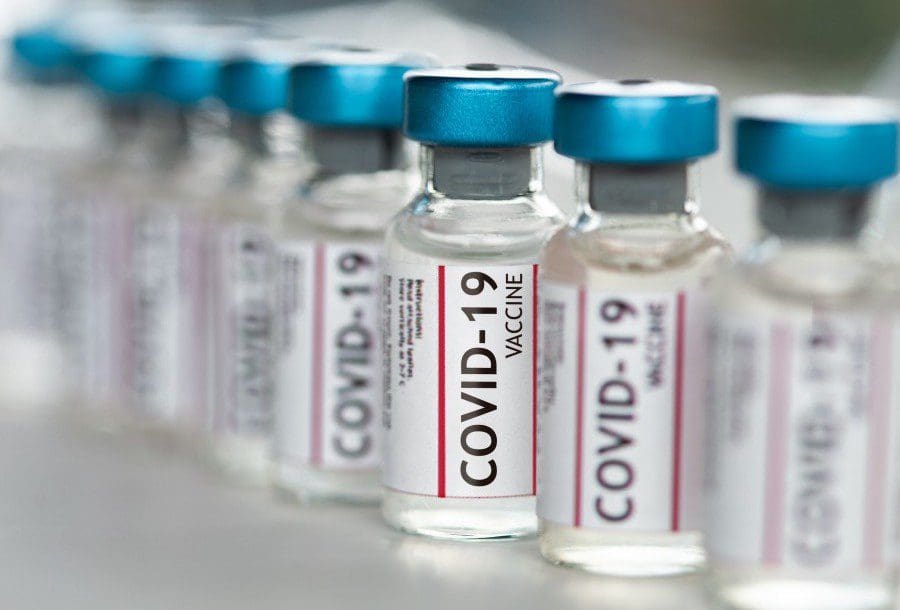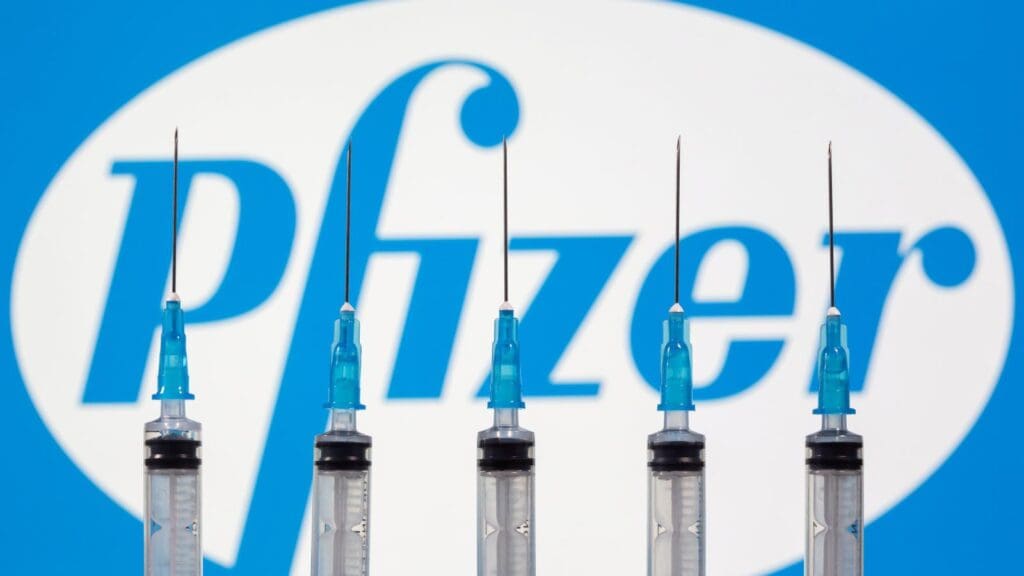

How Effective Are the Covid Vaccines Really?
Estimates of vaccine effectiveness were prominent in the UKHSA Vaccine Surveillance Report from the very first issuance. These statistics were pushed despite the widening gulf between our authorities’ dreams of being the nation’s saviour and the reality evident to people actually living in the country. Like tractor production in the former Soviet Union, it appears to be important for people to be constantly reminded that the Government is there to help them.
The first Vaccine Surveillance Report back in May 2021 gave the effectiveness of the vaccines as follows:


This wasn’t quite as good as the results from the Covid vaccine trials in 2020, but I suppose their performance could have been regarded as ‘close enough’ so long as you didn’t peer too closely:
- Pfizer: “BNT162b2 was 95% effective in preventing COVID-19 (95% credible interval, 90.3 to 97.6).”
- AstraZeneca: “In participants who received two standard doses, efficacy against primary symptomatic COVID-19 was consistent in both the U.K. (60·3% efficacy) and Brazil (64·2% efficacy).”
For those of us that did want to peer closely, there was no explanation for the apparent reduction in effectiveness of the Pfizer vaccine at ‘preventing COVID-19’ compared with the results of Pfizer’s clinical trial (85-90% vs 95%) – the vaccines were ‘safe and effective’ is all you needed to know.
In the most recent Vaccine Surveillance Report (for week 35 2022) the impact of vaccine waning, new variants and climate change had changed the estimates of vaccine effectiveness to:


I suppose the table above could be interpreted as ‘not that good’ (Pfizer’s second dose is down to 15% after six months), but the bigger question is what nasties all those ‘insufficient data’ cells hide. Frankly, I’m surprised that they’re there at all, given the multiple millions that have been vaccinated and the very high incidence of Covid in the country this year. How can the UKHSA still be lacking data?
Still, the UKHSA Vaccine Surveillance Report continues to suggest that those who had received three doses of vaccine (last dose, autumn 2021) would still have had some protection from infection even against the Omicron variant earlier this year. Yet the funny thing is that despite this consistent protection against infection we have nevertheless seen repeated Covid waves of ever increasing sizes since the vaccines were first rolled out.


A quick aside about the data in the above graph, which is from the ZOE symptom tracker. Back in spring and summer 2020 our authorities were keen to point out how the non-pharmaceutical interventions (social distancing, lockdowns, masking etc.) had saved us from doom. The shape of Covid waves since then (with far less intervention) suggests that it is just the natural shape of each Covid wave and that infections were going to decline anyway. Unfortunately, despite the wave structure seemingly being intrinsic to Covid, we nevertheless had to suffer months of our authorities fining people for the simplest of transgressions such as going for too long a walk, sitting at a park bench without a coffee or driving to Barnard Castle to check one’s eyesight.
I’m sure that many will say that the substantial increase in cases since vaccination began will be due to the ever increasing infectiousness of each successive Covid variant. I’ll discuss variants in a future post, but for the moment consider that in countries with lower vaccination rates, such as South Africa, we don’t see this effect, and instead we see well defined Covid waves of similar magnitude, until later Omicron waves which are of lower intensity:


This isn’t proof that the vaccines aren’t protecting against infection as well as is claimed, of course. It might reflect the different demographics, physical environment or testing regime in South Africa. However, it is highly suggestive that the vaccines might not be offering the protection claimed.
There’s also the very complex question of how ‘serious’ the symptoms are on each infection. The popular interpretation of the data is that Covid disease severity is lowered after vaccination, because ‘hospitalisations are lower’; however, this is an oversimplification. According to official statistics, there are four degrees of severity of Covid infection: asymptomatic, mild, severe and death. However, ‘severe Covid’ isn’t ‘like mild Covid but worse’. Severe Covid is the result of an immune over-reaction to the Covid infection, resulting in the immune system damaging the body and which requires expert medical attention (the so-called ‘cytokine storm’). Thus mild Covid isn’t similar to a mild cold (i.e., ‘not as bad as a bad cold’) or a mild flu (i.e., ‘not as bad as a bad flu’). Instead, ‘mild Covid’ covers a range from ‘a bit of a cough’ all the way to laid up in bed for a few days. It isn’t clear what impact the vaccines have had on the relative level of symptoms seen on each Covid infection that doesn’t result in hospitalisation, and this aspect of infection isn’t considered at all in the Vaccine Surveillance Reports. I should add that while in the early months of Covid there were some scientific papers that considered disease severity fully, the data for more recent times are much more sketchy. Vaccines might have made it more likely to have very mild symptoms upon infection with Covid, or made it much more likely that an infection results in the afflicted having to take several days off work. Perhaps readers would like to comment on their own experience of the symptom severity of Covid infections that have occurred in their social groups recently. I’d have liked to have seen this information in one of the Vaccine Surveillance Reports, but the UKHSA never felt the need to explore this aspect of Covid and the impact of the vaccines.
What about the mysterious ‘Long Covid’? Again, the Vaccine Surveillance Reports don’t consider Long Covid at all, which is strange considering the coverage that Long Covid received in the press (before inflation, war, the cost of energy, monkeypox and the death of the monarch distracted the population). For what it’s worth, recent studies have suggested that vaccination doesn’t impact on the risk of Long Covid. That said, ‘Long Covid’ covers a large array of health problems – is it possible that we’re seeing a large number of hospitalisations and deaths in the longer term caused by damage from the virus itself? It would be nice if there were more studies into this effect. Indeed, it would be nice if any laboratories that might have accidentally released this virus would tell us exactly what they were trying to achieve in their gain of function research. Alas, I fear the days of getting this information are long gone, largely due to our authorities de-platforming back in 2020 anyone who dared to question the official narrative of Covid having arisen because of bats, pangolins, wet markets and coincidence.
In the paper referred to earlier, they separate out Long Covid into three broad categories: cardiorespiratory problems, neurological problems and problems related to general inflammation. All of these should be closely followed by healthcare authorities and the results published in official reports in a timely fashion. The Vaccine Surveillance Report doesn’t consider these longer term problems at all – as far as it is concerned, all hospitalisations and deaths from (or rather, with) Covid are of the type that involves ‘severe Covid’ only (i.e., intensive care and ventilators).
I’ll note here that there’s an obvious question begging to be asked: Is there a link between ‘Long Covid’ and damage caused by the spike protein (or the immune response to the spike protein)? In other words, is there also a ‘Long Vaccine’, and might it also impact on cardiorespiratory health, neurological health and general inflammation in the body? I’ll explore this question in a future post.
Then there’s the protection against hospitalisation and death. The Vaccine Surveillance Report was always very keen to point out that the vaccines offer protection against these outcomes. However, it was always far less keen on quantifying these risks on an absolute basis by age and other vulnerability, and there was no consideration of how these risks compared with other day-to-day risks that people undertake without worrying too much. Given that there was widespread over-estimation of the mortal risks of Covid in 2020 and early 2021, it is likely that a large proportion of the reports’ readers, particularly amongst the non-vulnerable, would have misinterpreted the real-world protection that the vaccines offered to them. Which is to say, it is lovely that the vaccines might offer 90% protection against death after infection with Covid, but if the absolute risk of this outcome is very low (for non-vulnerable individuals) should they really be worrying about it? More recent data has suggested that the risks of Covid for non-elderly individuals were even lower than thought, suggesting that the vaccines were offering even smaller real-world benefit.
I’m more than a little sceptical of the protection offered by the vaccines, although I consider that there might well have been a mild protective effect against hospitalisation. However, the important consideration is why this occurs. It could be that the vaccines don’t produce mucosal IgA antibodies, thus offering no protection against infection in the upper respiratory tract, but do produce neutralising IgG antibodies in the blood and thus protect against systemic infection. Alternatively, the vaccines might induce an immune tolerance – that is, the immune system is trained (by endless vaccinations) to consider Covid as a benign virus (or even part of self) and thus is less likely to respond with an over-reaction of the immune system (i.e., reduced risk of severe Covid), but in turn this would make infection more likely in the first place. Thus the actual processes that are occurring to deliver the supposed protection against hospitalisation and death are rather important. Again, this is an aspect of the physiological effects of the vaccines that remains under-explored.
The next obvious question then becomes: Why are the ‘approved studies’ showing the vaccines to be so effective, when our practical experience of Covid infection rates in the nation suggests otherwise? I believe that this is due to shortcomings in the methods employed, something I’ll delve into in my next post.
Amanuensis is an ex-academic and senior Government scientist. He blogs at Bartram’s Folly.







